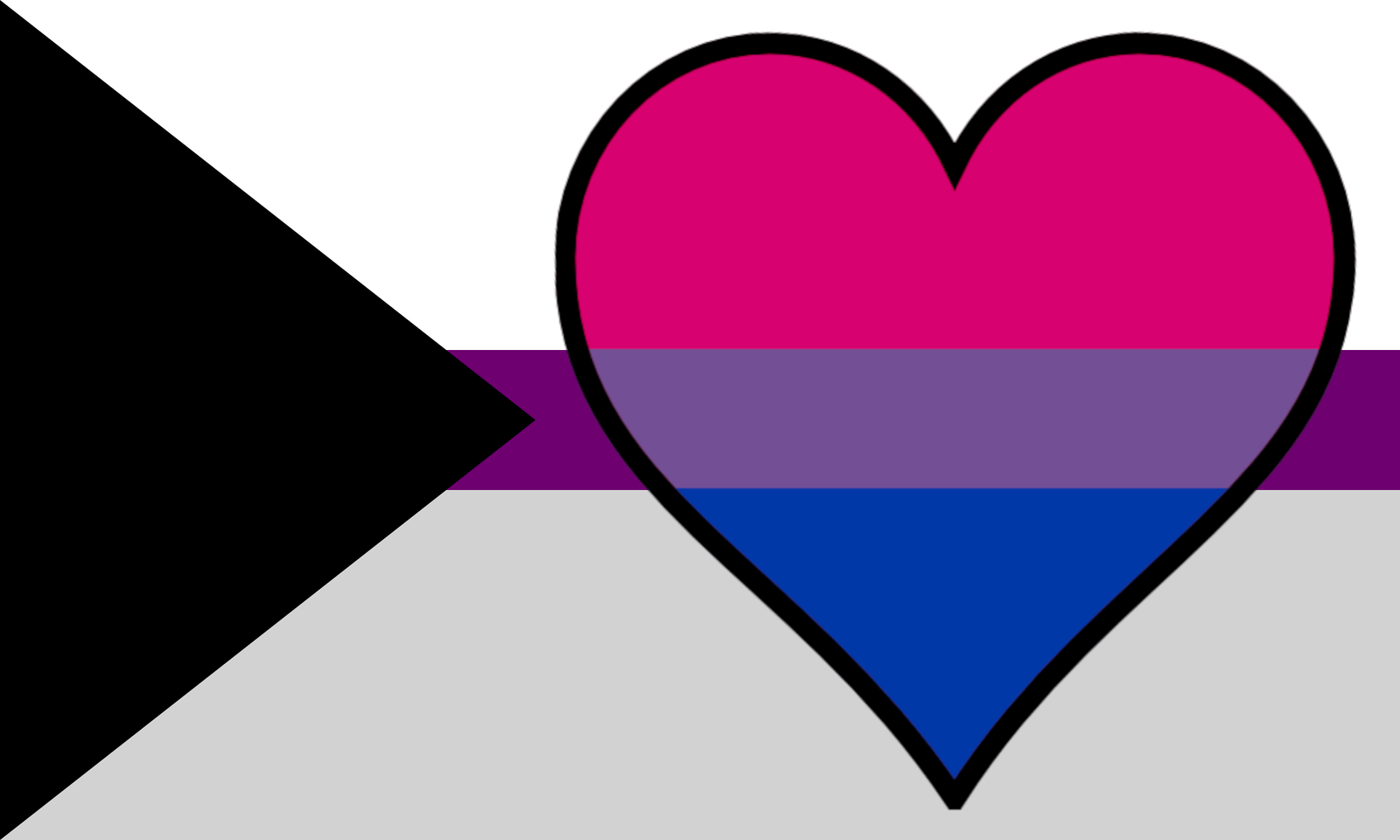What Is A Demisexual Flag?
The flag of demisexual represents asexual pride. Demisexuality is part of the asexual spectrum, where someone feels sexual attraction only after creating an emotional connection with another person.
The flag has black, white and gray stripes which stand for asexuality, sexuality, and the “gray area” in-between them. A purple triangle is usually found in the middle, showing the link to asexual groups. It serves as an emblem for demisexuality and a sign of honor for those who relate themselves with it.
Demisexuality
Unlike asexuality, demisexuals do have the ability to experience sexual attraction.
It is prompted by emotional closeness and not influenced by physical appearances or initial meetings. This sets apart demisexuality from other orientations towards sex that may involve immediate feelings of attraction or be based on different elements.
History of the Demisexual Flag
The precise beginning of the demisexual flag is not known. It probably appeared around 2010 in the asexual community on the internet, taking inspiration from asexual pride flag. No one person can be named as its creator, but it shows group work with colors and patterns selected to symbolize demisexuality’s special experience.
The Meaning Behind the Colors
The demisexual flag displays three colors, each holding significance for demisexuality. Black is used to represent asexuality, acknowledging that the demisexual experience lies within this spectrum. The color white represents complete sexuality, showing the potential for sexual attraction. Lastly, gray acts as the bridge between the two extremes, embodying the “gray area” where demisexual attraction grows from emotional bond.
The Placement of the Purple Triangle
The demisexual flag shows a purple triangle. In the LGBTQ+ community, triangles usually symbolize certain identities or subcultures. So, this purple triangle is for connecting demisexual and asexual identities together. It recognizes that demisexuality is part of the asexual spectrum, emphasizing commonalities and differences in experiences.
Variations of the Demisexual Flag
The demisexual flag that is commonly known shows black, white and gray stripes along with a purple triangle. But, there are slight changes in some other versions of this flag you may see.
Simplified Flag: Occasionally, the flag removes the purple triangle. It concentrates only on the stripes and their significance.
Color Variations: There might be small differences in the exact black, white and gray shades used.
Alternative Flags: These flags can have extra colors or symbols for showing experiences in demisexuality, such as aromanticism or particular gender identities.
Why Variations Exist
Personal Preference: Someone might like a less complex design or one that matches with their own experience.
Inclusivity: Alternative flags might be created to represent the diversity within the demisexual community.
Using the Demisexual Flag
The demisexual flag, like other flags within the LGBTQ+ community, is a symbol of pride and self-identification. People who identify as demisexual may use this flag to represent themselves on the internet or in physical places such as clothing worn to show their support at parades and community centers.
Usually, it is suggested that we show the flag with respect. When you are unsure, always ask for permission before using another person’s flag. You can buy demisexual flags on the internet or at LGBTQ+ pride events.
Critiques of the Demisexual Flag
The demisexual flag is a symbol of pride and self-identification within the LGBTQ+ community. People who identify as demisexual can show the flag online, like in their profile pictures or social media posts, or they might display it physically on clothing during parades or at community centers.
People are usually encouraged to display the flag with respect. If you are not certain, it is good to request approval first before utilizing another person’s flag. You can discover demisexual flags for buying on the internet or in LGBTQ+ pride gatherings.
A Symbol of Pride
The demisexual flag is a source of strength for people, making their identity more visible. In the LGBTQ+ community, where showing representation matters greatly, this flag helps to create feelings of being part and accepted.
It confirms the experience of demisexuality and gives people a way to claim their spot on the range of sexualities with pride. The flag acts as a symbol that brings people together, forming a sense of belonging and mutual comprehension for those identifying as demisexual.
Misconceptions About the Demisexual Flag
The demisexual flag is a representation of pride, which may not always be comprehended.
Demisexuality is about being sex-negative:This statement is incorrect. Demisexuals can have a normal and satisfying sex life, but they only feel sexual attraction after establishing an emotional connection.
The flag of demisexuality leaves out people who do not feel romantic attraction: Variations on the flag could possibly incorporate an aromantic symbol, but at its essence, the flag signifies the experience of being demisexual irrespective of one’s romantic inclination.
The demisexual flag is a knock on asexuality: No, it isn’t. The purple triangle pays homage to the asexual spectrum, recognizing commonalities while also highlighting what makes demisexuality distinct.
Every demisexual experiences it the same way: Demisexuality is a range, and the required level of emotional attachment for attraction can differ from person to person.
Flag is just a fashion: The demisexual flag represents self-respect and recognition, it’s not a temporary trend. It helps people who are demisexual to feel acknowledged and comprehended.
The demisexual flag is more than just colorful stripes. It’s a powerful symbol that fosters pride, combats misconceptions, and unites a vibrant community. By celebrating this flag, we celebrate the unique experiences of demisexual individuals and create a more inclusive world for all.




